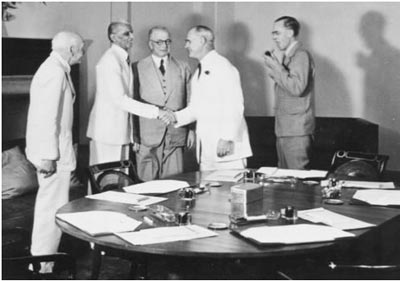As an ambitious ruler with a fancy for innovations in policy matters both in foreign and domestic affairs, Muhammad Tughluq (full name- Muhammad Bin Tughluq) had a desire to conquer not only the entire Indian subcontinent but also Khurasan outside its boundary. And in the case of Indian subcontinent Muhammad Tughluq even desired to conquer its hilly region in the north.
Though Muhammad Tughluq tried certain innovations in administration domestic policy with best intentions, these affected the fortunes of his empire adversely. However, the most serious schemes of reforms Muhammad Tughluq introduced were taxation in the Doab, transfer of the capital to Daulatabad and introduction of token currency. It is important to note here that some writers have described these projects “mad schemes” of Muhammad Tughluq.
Also Read: Cultural Achievements of Akbar
Taxation in the Doab
Muhammad Tughluq in the beginning of his reign increased taxation in the Doab; on this measure of the Sultan Dr. AL Srivastava wrote that the Sultan desired to raise the revenue by five to ten percent only and that too not by house-tax and grazing tax. However, according to Barani, the taxation was raised by ten to twenty times more, while Gardner Brown said that the rise in taxation was normal.
Whatever might be the fact about the amount of percentage of raised taxes,it is quite certain that at a time when there had been a famine in Doab because of the failure of the rain, taxes were increased, due to which Pleasants instead of paying their taxes abandoned their lands and took to highway robbery.
Tax collectors, in order to extract taxes resorted to oppressive methods that resulted in widespread revolts. The Sultan suppressed the revolts with iron hands. On this episode Dr. Mahdi Hussain opined that disbanded soldiers of the army, which were earlier recruited for Khurasan expedition, had taken up cultivation as their occupation; however, when the taxes were increased they gave up cultivation and killed revenue officers. Therefore, the Sultan suppressed their rebellion severely.
However, in the context, the reason behind revolts hardly matters; the only thing of importance is that it is certain that the taxation was increased, the oppressive methods of collecting the taxes were the primary reasons of the revolts and the Sultan suppressed revolts rigorously.
According to Dr. A.L. Srivastava, the Sultan afterwards abolished the taxes, gave seed, bullocks, etc. to cultivators and arranged for the digging of wells for irrigation. But all these corrective measures bore no fruit because the ‘help’ was too late and the people utilized that help in filling up their empty bellies. In this way this policy of Sultan proved a perfect failure due to which even the usual revenue could not be collected from the Doab.
Must Read: The Administrative System under Delhi Sultanate
Transfer of the Capital by Muhammad Tughluq
Muhammad Tughluq’s attempt to transfer the capital, in between AD 1326 and 1327, from Delhi to Devagiri that was renamed Daulatabad was one among the misunderstood measures. For this transfer different reasons have been given by different scholar writers. Writing on this particular initiative taken by the Sultan, Ibn Batuta and Isami said that the citizens of Delhi used to write letters to Sultan which contained abuses and scandals. So in order to punish the people he decided to lay Delhi Waste. Famous scholar writer Sir Woolserly Haig has accepted the version provided by Ibn Batuta. According to Professor Habibullah, the motive of the Sultan was to cater incentive to Muslim culture in the South. Moreover, the prosperity and the administrative convenience of the South were also the motives of Muhammad Tughluq. However, according to Dr. A.L. Srivastava, the desire of safeguarding the capital from Mongol invasions from the north-west, the necessity of consolidating the empire in the South and the temptation to utilize the rich resources the empire in the South and the temptation to utilize the rich resources of the South were primary considerations for the transfer of capital. According to the contemporary historians, the entire population was ordered to leave Delhi. Ibn Batuta writes, “A search was made and a blind man and a cripple were found. The cripple was put to death while the blind man was dragged to Daulatabad where only his one leg reached.” And not only this, Isami has written, “Muhammad Tughluq ordered that the city (Delhi) should be set on fire and all the populace should be turned out of it.” However, this view has not been accepted by some scholars; for instance, expressing his view on this particular episode Dr. K.A. Nizami has said, the entire population of Delhi was not asked to leave. Only the upper classes, consisting of nobles Ulema, Sheikhs and the elite of Delhi were shifted to Daulatabad. But historians of repute like Dr. R.C. Majumdar, Dr. A.L. Srivastava and Dr. Ishwari Prasad have described that there is no doubt in the fact that the Sultan had ordered all citizens of Delhi to vacate it.
Muhammad Tughluq took up all possible measures for providing comfort to people in the course of their journey from Delhi to Daulatabad. People were given free food and drinking water after every three kms of journey; shady trees were planted all along the roads, all were provided means of transport, all were compensated for the loss that they incurred in leaving their assets at Delhi, and all were given free residence and food at Daulatabad. Instead all these comforts no one can deny that the forty days journey from Delhi to Daulatabad would have been an extremely tormenting experience for the people of Delhi.
Realizing that his scheme had failed completely Muhammad Tughluq gave permission to people to return to Delhi in AD 1335. Several reasons have been given for the failure of the scheme.
The Sultan shouldn’t have asked the people and even the elite of Delhi first to go Daulatabad en masse because common people were neither prepared to shift to an unknown distant place nor was there any necessity of it. The Sultan at first, should have shifted only his ‘court’ and the rest would have followed themselves.
Even the theory that the Sultan wanted to shield the empire from the invasion of Mongols do not seem appropriate because Daulatabad, being a distant city from the north-west frontier, was no good choice to be the capital of the empire. From Daulatabad it was very difficult to resist invasions of Mongols. Thus the Sultan made a wrong choice of the place and took to wrong methods to transfer his capital. So, his scheme failed completely.
Also Read: The Delhi Sultanate
Introduction of Token currency
The introduction of token currency and issuance of copper and brass coins was the most notable feature of the coinage system of Muhammad Tughluq. According to Barani, the Sultan introduced token currency because treasury was empty, while he needed money to fulfill his schemes of conquests. Most probably, Muhammad Tughluq was inspired by the examples of Iran and China where the policy of introducing token currency was implemented; but it is imperative to mention here that in both the countries it failed.
However, modern historians differed with these theories and were of the view that there was a worldwide shortage of silver at that time and India too faced its serious shortage; therefore, the Sultan was forced to issue token currency.
Both copper and brass coins were issued by Muhammad Tughluq, the Sultan made these token coins legal tenders and kept their value at par with gold and silver coins. Prior to this, the copper coin was Jital, i.e., Paisa. Now, the Sultan issued Tanka of copper for the Rupee of silver.
According to Prof. Habib, the people were responsible for the failure of this scheme because they failed to discriminate between genuine and imitated false coins.
But the rest of historians have put the blame on the Sultan for the failure of the scheme. According to them, it was a blunder on the part of the Sultan that he did not take proper precautions to check imitation of coins issued by the royal mint.
The token currency was kept in the market only for three to four years. Realizing the sheer failure of his scheme, Muhammad Tughluq, in all good faith, withdrew the entire token currency; the people were asked to return token coins for which they were paid back gold and silver coins by the royal treasury.
Although, Muhammad Tughluq failed in successfully implementing any of his schemes, it has been expressed in favour of the Sultan that his measures were way ahead of his time, and his officials and subjects failed to understand the worth of his schemes and, therefore, did not cooperate with him to bring those measures to success.
However, the responsibility of the Sultan for the failure of his schemes cannot be ruled out. In fact Muhammad Tughluq himself was responsible to a large extend for the failure of his schemes. The Sultan it can be said politely, possessed on imaginative mind but did not have practical wisdom. He lacked patience also; he desired quick success. All these weaknesses contributed to the failure of his schemes.
Don’t Miss: Impact of Religious Policy of Aurangzeb on Mughal Empire






